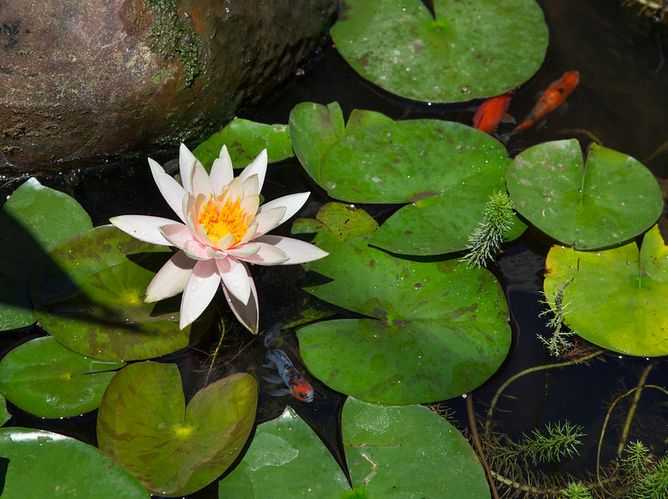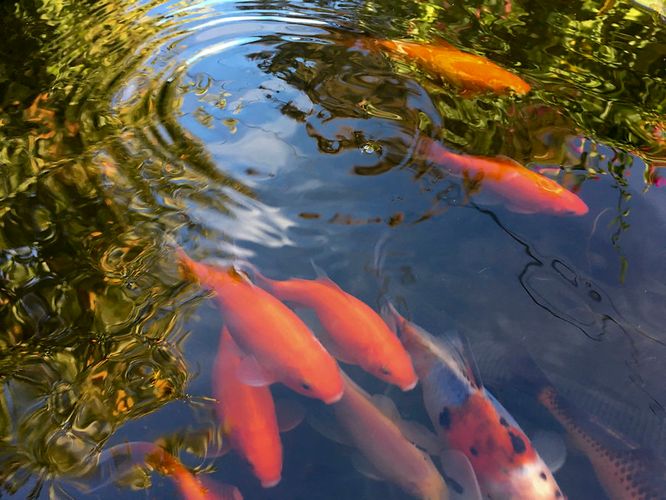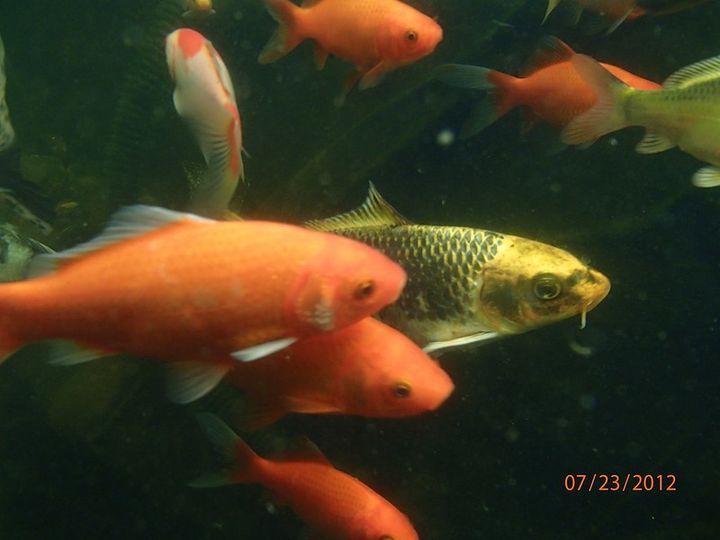Are you thinking of buying goldfish? Then you’re probably wondering what temperature is best for them. Goldfish are adaptable and can survive in a wide range of temperatures.
Still, their optimal range sits a bit lower than most other fish you’ll find in the pet store.
Keep reading to discover what temperatures your goldfish like. We’ll cover how to take care of them both in indoor aquariums and in ponds.
What Is The Best Temperature For Goldfish?
Goldfish are cold-water fish. This means they usually don’t need heaters and prefer cooler water.
Most fancy goldfish do best in temperatures between 65-74°F (18.3-23.3℃). This is warm enough to encourage growth but won’t cause stress.
Comets and shubunkins like water that is a bit colder and do best in temperatures between 60- 70°F (15.5-21.1℃).
They Live In Varying Climates
Goldfish are native to parts of Southeast Asia. They are domestic fish that come from carp.
Today, goldfish live all across the world in lakes, ponds, rivers, and streams. Almost anywhere there is fresh water, a goldfish can survive.
They are not native to most of these regions. They have been introduced as pets or for use in mosquito control.
How Do Goldfish Respond To Seasonal Changes?

65-74°F (18.3-23.3℃) is a goldfish’s optimal range. Still, they can survive in water temperatures that are colder or warmer than that.
It’s near impossible to keep the temperature between 65-74°F (18.3-23.3℃) year-round in a pond. But, that’s okay.
Spring
Springtime is when the water begins to warm up. Your goldfish will start to come out of their state of torpor.
They will become more lively and are preparing for the breeding season. So, you’ll need to feed them more, and they’ll need higher levels of protein.
Summer
Summertime is when most goldfish exhibit their peak activity levels. This is also when their colors are the brightest and most beautiful.
Breeding season is over at this point, so you can cut back on their feedings a bit.
Take care that your pond water doesn’t rise above 80°F (26.7℃). There will be less oxygen in the water and your fish may become lethargic.
Fall
Temperatures will begin to drop, and so will the activity levels of your goldfish. They need to start preparing for winter, so they will eat more to build up their food reserves. So, you should feed them more food during this time with higher levels of protein and nutrients.
Winter
With the cold temperatures of winter, your goldfish will become much less active. At temperatures of 45–55°F (7.2-12.8℃), they will still swim around a bit. If the temperatures drop below 45°F (7.2℃), they will enter a state of torpor.
They will not eat very much, so you should only feed them a small amount. If they are not eating at all, don’t give them food.
Stability Is Key
Maintaining a stable temperature is also important.
Goldfish don’t handle rapid temperature changes very well. It can cause them to go into shock, and in extreme cases, may kill them.
It’s easier to maintain a stable temperature if your goldfish live in an indoor aquarium. You mostly need to be careful when doing water changes.
For example, if your aquarium water is 70°F (21.1℃), then you don’t want to pour cold or hot tap water into the tank. The new water should be as close in temperature to the aquarium water as you can get it.
Also, if you do use a heater for your goldfish, don’t make huge temperature adjustments at once. Only raise or lower the temperature one or two degrees a day. This applies to both aquarium fish and those you keep in your pond.
Will Pond Goldfish Die In Freezing Temperatures?

So, goldfish can survive in very cold temperatures. But, can they survive if the temperature drops below freezing?
As a general rule, fancy goldfish can’t survive in very low temperatures. They begin to suffer when the temperature drops below 68˚F (20℃). So, if you want to keep fancy goldfish in a pond, you’ll need a heater and a thermometer to keep the temperatures stable.
Other goldfish — like common goldfish and shubunkins — can survive in temperatures as low as 32-40˚F (0-4.4℃).
Still, goldfish CANNOT survive in temperatures lower than 32˚F (0℃). So, you’ll need to buy a heater to prevent your pond from completely freezing over. If the pond freezes over, there won’t be enough oxygen for your fish to survive.
At temperatures this low, your goldfish will enter a state of torpor.
Torpor is like hibernation, but it’s not true hibernation. During torpor, the fish is still awake and swimming part of the time. But, like hibernation, torpor causes the fish’s metabolism to slow down. So, they’ll move around less and eat less.
This is a natural process that goldfish deal with in the wild. As the water temperatures begin to warm in the spring, the goldfish will come out of torpor. The warming of the water is also what entices goldfish to spawn.
Where You Live Matters
Of course, you need to be able to provide these optimal temperatures to your goldfish. Providing them with the right temperature often comes down to where you live. It also depends on whether they live in a pond or an indoor aquarium.
If You Live Somewhere Cold
Do you live somewhere where the temperature consistently drops below 60˚F (15.6℃)? If your goldfish is in a pond, you’ll need to provide it with a heater.
If your goldfish live in an indoor aquarium, you probably won’t need a heater. Most people keep their houses at about 70˚F (21.1℃), so this would be a perfect temperature for your fish. Of course, if you’re someone who likes to keep their house cold, then you’ll need to provide them with a heater.
If You Live Somewhere Hot
Conversely, if you live somewhere hot, you’ll need to keep your goldfish cool.
The nice thing about water is that it stays cooler than the air around it. So, it’s unlikely that your pond water will ever get as hot as the air outside.
Still, if air temperatures reach above 80˚F (26.7℃), you’ll need to take precautions with your pond.
Try to place your pond in a shady location where it’s going to stay cooler for longer. You can also place a lot of aquatic plants around the pond to provide extra shade.
Usually, keeping an inside aquarium cool isn’t much of an issue. But, if you live in a hot area and don’t use air conditioning, you’ll need to take some steps to keep your aquarium cool.
The best thing you can do is place your aquarium in a shady area of your house. Keep it away from windows and sunlight.
If it’s still too hot, you can place a fan next to the aquarium so that it blows over the surface of the water. The water agitation will help keep the temperatures down.
Conclusion
Goldfish thrive at temperatures between 65-74°F. Still, goldfish are adaptable and can survive in a wide range of temperatures. This is why they’re one of the best fish to keep in outdoor ponds.

